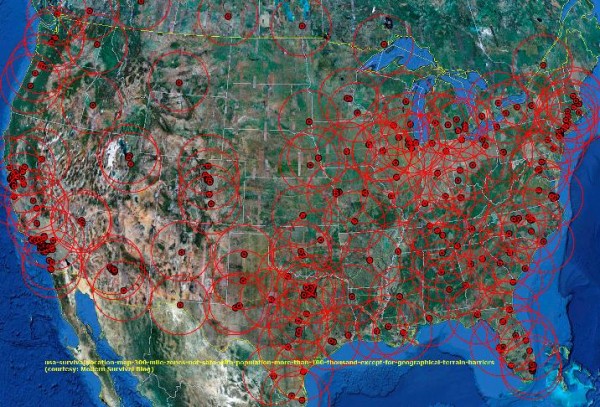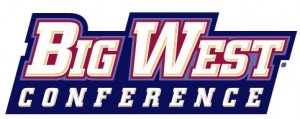In Their Words: Life at the Mid-Major Level (part two)
Posted by rtmsf on September 28th, 2010Andrew Murawa is the RTC correspondent for the Pac-10 and Mountain West Conferences and an occasional contributor.
To read the entire In Their Words series, click here.
Part Two: RECRUITING
Over the summer, we’ve spent time hearing about some of the next big-name recruits on their way to college basketball: Jared Sullinger and Harrison Barnes, Anthony Davis and Michael Gilchrist. We’ve heard the big-time schools announce their high profile games on their upcoming schedules: Kentucky going to the Maui Invitational and visiting North Carolina, Michigan State hosting Texas and going to Duke. But for the vast majority of Division I programs, they’ve been flying under the radar. There are at present 73 teams that participate in basketball in the six BCS conferences, but there are 347 total programs in Division I. Of those other 274 programs, there are certainly quite a few big-name programs: last year’s national runner-up Butler comes to mind immediately, as does Gonzaga, Memphis and a handful of other schools in conferences like the Atlantic 10 and the Mountain West. But, we were also interested in how the other half (or really, how the other three-quarters) lives, so we spent some time talking to coaches, athletic directors and other people around the country affiliated with some of those other schools — those non-BCS schools, those “mid-majors” — and we asked them about how they recruit, how they create a schedule, how they market their programs, and quite a few other things. Over the next eight weeks, we’ll let them tell you their story, in their own words.
To begin, let me introduce and thank this week’s cast of characters:
-
Tommy Dempsey, Head Coach, Rider – Dempsey enters his fifth season as the head man at Rider, following two seasons as an assistant. He has compiled an 83-75 record over that time and coached NBA lottery pick Jason Thompson during his time there.
-
Jason James, Head Coach, Tennessee-Martin – James enters his second season as the head coach at UT-Martin following eight seasons as an assistant coach there. His first season was rough, to the tune of 4-25, after he was appointed head coach in the wake of scandal with the previous head coach. But James, the recruiter who brought Lester Hudson to UT-Martin, has plans to begin to turn things around this season.
-
Todd Miles, Assistant Athletics Director for Media Relations, Long Beach State – Miles starts his third year in Long Beach following a seven-year stretch at Boise State where he was the primary media relations contact for the basketball team.
-
Eric Brown, Assistant Coach, Long Beach State – Brown enters his fifth year as an assistant on head coach Dan Monson’s staff, after previously having spent time on coaching staffs at Cal-State Northridge, USC and Iowa State.
-
Chris Caputo, Assistant Coach, George Mason – Caputo is entering his sixth season as an assistant coach for the Patriots after spending the previous three seasons as an administrative assistant and video coordinator under head coach Jim Larranaga.
-
Murry Bartow, Head Coach, East Tennessee State – Bartow is entering his eighth season as the Buccaneers head coach, after having previously succeeded his father Gene Bartow as the head coach at UAB. Bartow has posted a 118-72 record in his years at ETSU and has racked up 241 total wins and four NCAA appearances in his 13 seasons as a head coach.
-
Dale Layer, Head Coach, Liberty – Layer enters his second season at Liberty after having spent a season as an assistant at the university in 2007-08. In between, he spent a year at Marquette and previously he spent seven seasons as the head coach at Colorado State. He has compiled a 118-122 record in his eight seasons as a Division I head coach.
-
George Ivory, Head Coach, Arkansas-Pine Bluff – Ivory enters his third season in Pine Bluff, where he has turned the Golden Lions into winners. UAPB turned around an 0-11 start last season by finishing 18-5 over their last 23 games, winning UAPB’s first SWAC tournament title in 43 years and advancing to the NCAA tournament before losing to eventual national-champion Duke.
Last time around, we heard about the challenges mid-major schools face in competing for recruits and the importance of player development at the mid-major level. This time, we’ll look at some of the more practical questions to be answered when recruiting, such as what types of players coaches are going to be looking for and where they are going to find them. If you’re in a talent-rich area, you may not ever need to go outside of your region to find players, but the bigger pool of talent from which you are able to draw, the more likely you are to be able to land talented players.
Tommy Dempsey, Head Coach, Rider: We’re in a great location. We sit right in the middle between Philadelphia and New York City. We’re about 35 miles from Philadelphia and about 50 miles from New York City, which also puts us two hours from Baltimore, maybe three hours from Washington DC, within three hours of Virginia, we have a couple of kids from Delaware, so again we’re in a location that allows us to recruit regionally. I think most coaches will tell you that they want to take care of their back yard, but how big your back yard is changes for everybody. If you’re in the Midwest and there are not as many players within a two-hour radius of your school, then obviously you have to change your approach. But in our situation we are able to do the majority of our recruiting close to home.
Jason James, Head Coach, Tennessee-Martin: As far as location, we try to bring in student-athletes within about a six hour radius from us, we’ve been more successful doing that, but saying that, we kind of go where we know people, where people can help us and we’ve been able to be successful because of our contacts.
Todd Miles, Assistant Athletics Director for Media Relations, Long Beach State: Coach (Dan) Monson’s goal is always to get the best player in Long Beach. That’s his number one goal. That’s how we got Larry Anderson. Casper Ware is a local kid, T.J. Robinson happened to come from Connecticut, but he came because we were recruiting Larry Anderson who was at a prep school and we saw T.J. But, with this team this year we had a lot of returners, so they were trying to find pieces that would fit with this team, with all these returners they had certain needs and they may have been a little more particular about who they wanted. Three years ago when Coach Monson and his staff came here, they needed players, and it didn’t matter what position. And I think this year maybe more they wanted to recruit to a position or to a skill set.
Eric Brown, Assistant Coach, Long Beach State: We prefer to recruit locally, but really, it is all based on need. Certain classes are stronger than others: 2012 looks to be stronger than the 2011 class, as an example. And then there might be times when you have to recruit for need, like you need a point – it’s not just about recruiting a position, like you need a guard or forward – you might have more specific needs, like you need an athletic, guard-the-rim post-player, they may not need to be a great offensive post player. Or you might need a post player who can pick-and-pop and hit the three, but isn’t that great on the block. Or you might have a bunch of 6’4/6’5 athletes who are drivers/slashers, but you need to find a guy that can hit the three. If a player can do it all, they’re not going to come to our level. Sometimes we just need to find guys that can fit a need. In this case, we got some really good kids out of state and if we have a need and don’t think that need can be best filled out of the local area, we go to wherever it is we can get it.
Chris Caputo, Assistant Coach, George Mason: There are some years where we sign a number of guys from the area and other years where it’s a little bit different, but yeah, our base is the local area. Last year we brought in two kids from the DC area. Obviously we want to stay with that as much as possible, but there are times when there is just not enough volume in your area when you’ve got to get five or six kids in a year, which we’ve had to do. You know, we had to get 10 guys in two years and so sometimes when there’s not as much in the area and you’ve got to get quality, you’ve got to go to places out of the area, and I think that’s where TV has helped us as well.
Schools like Long Beach State and George Mason have easy access to major metropolitan areas. Obviously, not all schools enjoy such a location, and as a result cannot rely entirely on getting recruits from their local area.













































